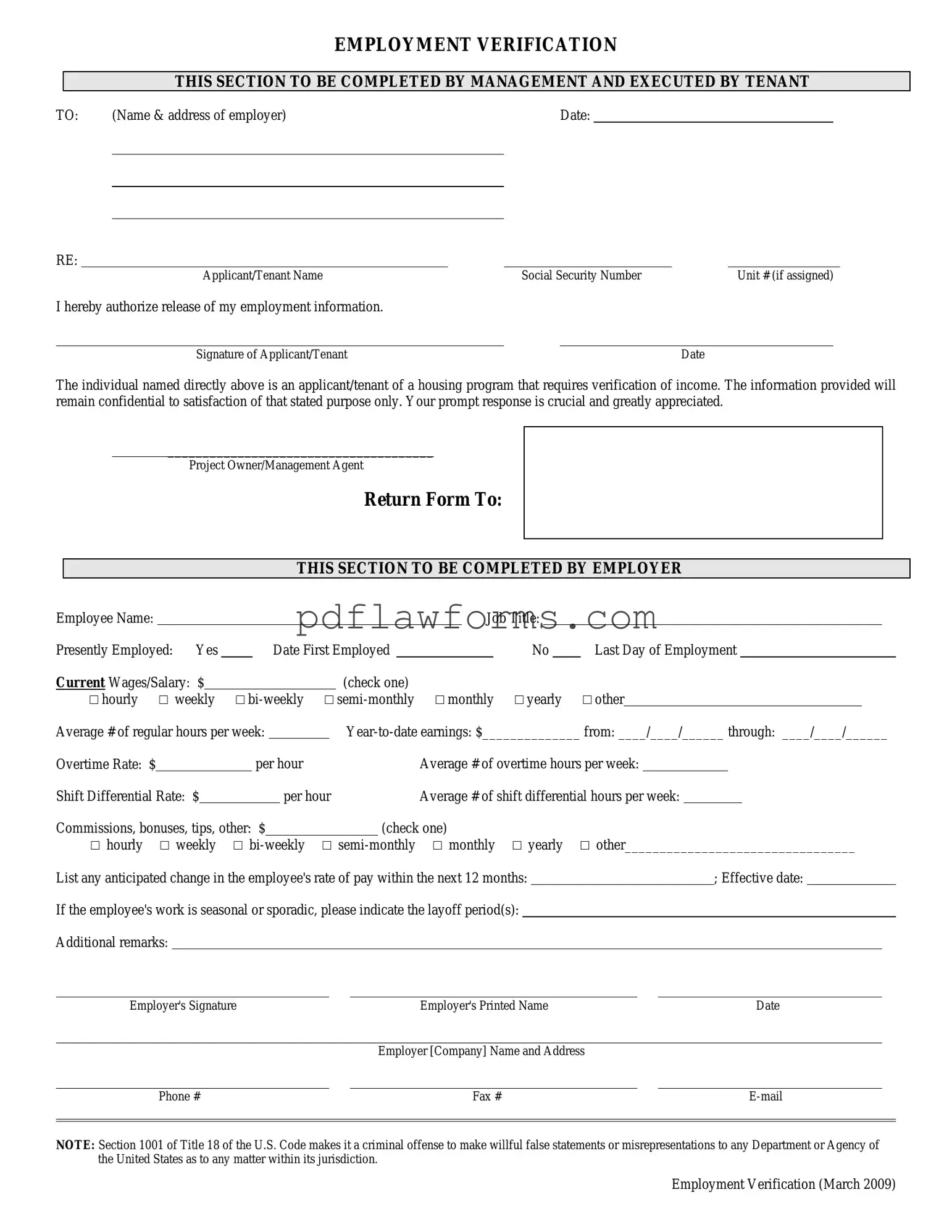The Employment Verification Form serves a crucial role in the hiring process, acting as a bridge between employers and potential employees. This form typically requests essential information about an applicant's previous employment history, including job titles, dates of employment, and reasons for leaving. Employers use this document to confirm the accuracy of the information provided by candidates, ensuring that they possess the necessary qualifications and experience for the position. Additionally, the form may include sections for verifying the applicant's salary history and performance ratings, offering insights into their work ethic and capabilities. It is important for both parties to understand the implications of the information shared, as this verification can significantly impact hiring decisions. Moreover, the form often requires the consent of the applicant, highlighting the importance of privacy and compliance with relevant laws. Understanding the Employment Verification Form is essential for both job seekers and employers alike, as it lays the groundwork for a transparent and trustworthy hiring process.
